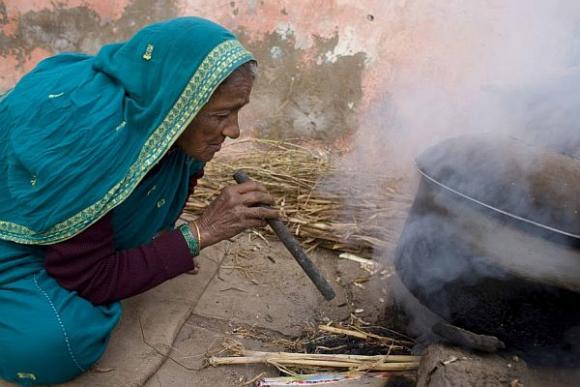Why don't the poor adopt cookstoves that improve their health?
Biomass combustion using traditional cookstoves is thought to be the main contributor to indoor air pollution, a principal culprit of acute respiratory infections in children worldwide. Black carbon emission from traditional cook-stoves is an important contributor to climate change as well. Despite these hazards, half of the world’s population continues to rely on traditional biomass-burning stoves for cooking.
Although there are "improved cookstoves" that can help reduce indoor air pollution substantially, the poor do not not adopt them. Governments and international organizations have begun to take notice of the issue – in 2010, the Global Alliance for Clean Cookstoves was formed, with the goal of 100 million improved cookstoves by 2020. Over $250 million in projected funding has been allocated to this mission.
 But why don't the poor adopt cookstoves, even if it can improve their health substantially? Is it lack of clarity on the benefits or is it the price? Can word-of-mouth from opinion leaders improve adoption? Or is it intra-household dynamics where women and men have different objectives and different levels of control over the family budget that affect adoption of a product used by women?
But why don't the poor adopt cookstoves, even if it can improve their health substantially? Is it lack of clarity on the benefits or is it the price? Can word-of-mouth from opinion leaders improve adoption? Or is it intra-household dynamics where women and men have different objectives and different levels of control over the family budget that affect adoption of a product used by women?
Professor Mushfiq Mobarak of the Yale School of Management set about seeking answers to this question using a field experiment involving about 3000 households in 60 Bangladeshi villages. Experimentation is the gold standard to learn about phenomena in the physical sciences; Professor Mobarak is in the vanguard of economists using experimental techniques to learn about economic phenomena. Professor Mobarak and his co-researchers tested several interventions designed to identify which factor affected adoption: level of subsidy, information about the health benefits, level of information among opinion leaders, and marketing targeted to men versus women.
The results of the experiment provide substantial insights for policy makers seeking to encourage adoption. Consumers are well-aware of the health benefits, through learning on their own or through opinion leaders, so it is not a lack of information that prevents adoption. The most important factor hindering adoption is the asymmetry in the intra-household power. Women are more motivated to adopt clean cookstoves than men; clearly, women are the ones who have to suffer the smoke and the short-term irritation and long-term health consequences. But men control the budget, and don't see these benefits as much. So when the product is given for free, women adopt the product, but the imposition of even a small price substantially reduces adoption.
Marketing must therefore target both men and women. But how does one make a cookstove attractive to men? Professor Mobarak suggests an interesting idea: use the heat of the cookstove to generate electricity that can charge a cellphone!! Apparently, this is no fancy flight of imagination. Indeed, a company in NYC has developed such a product; and Professor Mobarak is on to his next experiment using the bundled cookstove-cum-cellphone charger.



